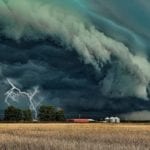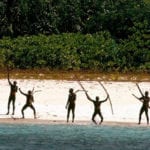 Weird Stuff
Weird Stuff  Weird Stuff
Weird Stuff  Our World
Our World 10 Archaeological Discoveries of 2025 That Refined History
 Weird Stuff
Weird Stuff 10 Fascinating Facts You Might Not Know About Snow
 Miscellaneous
Miscellaneous Top 10 Things Crypto Was Supposed to Change & What Actually Did
 History
History 10 Huge Historical Events That Happened on Christmas Eve
 Music
Music 10 Surprising Origin Stories of Your Favorite Holiday Songs
 History
History 10 Less Than Jolly Events That Occurred on December 25
 Weird Stuff
Weird Stuff 10 Funny Ways That Researchers Overthink Christmas
 Politics
Politics 10 Political Scandals That Sent Crowds Into the Streets
 Weird Stuff
Weird Stuff Ten Bizarre Facts About The Doge Meme
 Weird Stuff
Weird Stuff 10 Weird Things People Used to Do at New Year’s
 Our World
Our World 10 Archaeological Discoveries of 2025 That Refined History
 Weird Stuff
Weird Stuff 10 Fascinating Facts You Might Not Know About Snow
Who's Behind Listverse?

Jamie Frater
Head Editor
Jamie founded Listverse due to an insatiable desire to share fascinating, obscure, and bizarre facts. He has been a guest speaker on numerous national radio and television stations and is a five time published author.
More About Us Miscellaneous
Miscellaneous Top 10 Things Crypto Was Supposed to Change & What Actually Did
 History
History 10 Huge Historical Events That Happened on Christmas Eve
 Music
Music 10 Surprising Origin Stories of Your Favorite Holiday Songs
 History
History 10 Less Than Jolly Events That Occurred on December 25
 Weird Stuff
Weird Stuff 10 Funny Ways That Researchers Overthink Christmas
 Politics
Politics 10 Political Scandals That Sent Crowds Into the Streets
 Weird Stuff
Weird Stuff Ten Bizarre Facts About The Doge Meme
10 Events That Made ‘The New York Times’ Stop The Presses
For most of us, the words “stop the presses” bring to mind a familiar scene. The papers are rolling through the printers when breaking news hits and someone shouts out the infamous phrase, halting all production.
Hollywood, of course, is to blame for this. The real-world equivalent is less dramatic and a rare occurrence. However, this doesn’t take away from the fact that it is a frantic event for the men and women working to publish your paper.
The deadline for all New York Times articles is 11:00 PM. Every weeknight, the plant will print more than 300,000 copies, double that on weekends, just for New York alone. Then the papers have to be loaded onto dozens of trucks by 3:25 AM and shipped. So, if “stop the presses” is called, it’d better be for a good reason.
10 Muhammad Ali’s Death
June 3, 2016
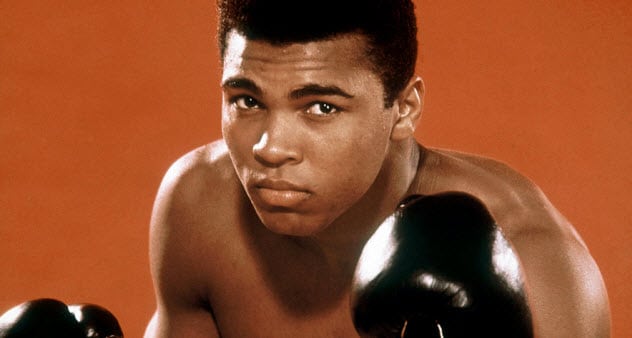
It’s hard to think of boxing without Muhammad Ali immediately coming to mind. He was easily one of the greatest boxers of all time. From his famous quote—“Float like a butterfly, sting like a bee, the hands can’t hit what the eyes can’t see”—to his taunting skills that could make Tupac and Biggie Smalls blush, Ali was and still is an icon of the sport. So, it comes as no surprise that many grieved over the death of one of the greats.
When it was announced that Ali was on life support, the Times began preparations for the following news day. They worked toward getting all the information out there, including a follow-up in the case of his death. At 12:20 AM on June 4, 2016, there was an announcement on Twitter that Ali had died.
A text was sent: “NBC reporting he’s dead.” After confirmation from the family, a news alert was sent out at 12:44 AM and the presses were stopped. The digital news team quickly went to work to publish the obituary and a compilation of Ali’s quotes online. At 1:51 AM, the pressroom had the presses replated and restarted.[1]
9 New York’s Same-Sex Marriage Law
June 24, 2011
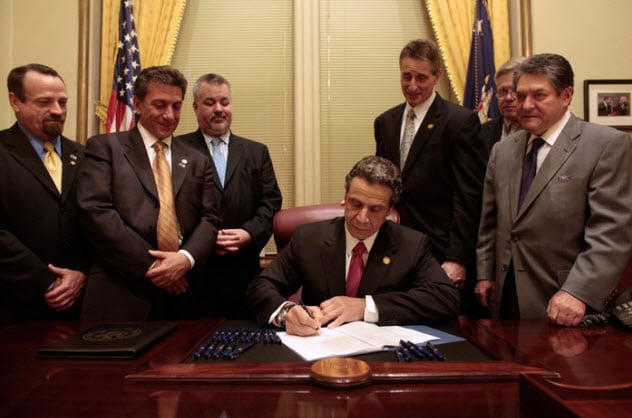
No matter where you stand on same-sex marriage, it is a big issue throughout the world. It has been a topic of debate since the 1970s, but it wasn’t until 2000 that Vermont became the first state in the US to grant the full benefits of marriage to same-sex couples.
In 2001, the Netherlands became the first country to legalize same-sex marriage. Two years later, the Vatican stepped in to give their opinion on the subject by campaigning against it. Even though some states had legalized gay marriage by this point, it wasn’t until 2004 that the first legal gay marriage took place in Cambridge, Massachusetts.
The debate for New York to legalize same-sex marriage had been fought for years. The state and even some senators switched their views back and forth. In June 2011, after days of discussion, The New York Times was waiting to hear what to report.
It wasn’t until June 24 that a decision was finally made after a closed-door, nine-hour debate. The bill was approved by a 33–29 vote. At 10:30 PM, the vote was announced publicly. Finally, Governor Andrew M. Cuomo signed the measure at 11:55 PM, giving the rights to gay couples and a headline for the Times.[2]
8 The Killing Of Osama Bin Laden
May 1, 2011
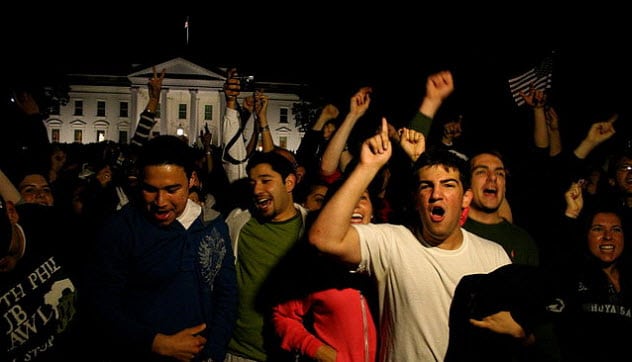
Osama bin Laden and “terrorist” became synonymous after the attack on the World Trade Center on September 11, 2001. It was a heinous act against the US and will go down in infamy. Of course, the man behind this act of terrorism was Osama bin Laden. He was the founder and first leader of Al-Qaeda. It wasn’t until almost 10 years later that the man was finally brought to justice by Robert J. O’Neill of SEAL Team Six.
On May 1, 2011, it was announced that US President Barack Obama would address the nation at 10:30 PM Eastern Time. The nation’s television anchors and news editors had no idea what was coming. At 10:45 PM, Obama still had not addressed the public. However, the news was already circulating on the Internet via Twitter. It was at that time that ABC News correspondent Martha Raddatz reported: “We’re hearing absolute jubilation throughout the government.”
After many delays, at 11:35 PM, President Obama stated that “justice had been done” and confirmed the death of one of the most wanted men in the world. After the speech was made just before midnight, The New York Times stopped the presses to change the front page to feature the announcement.[3]
Most sources cite bin Laden’s date of death as May 2, 2011. Time zone differences account for the discrepancy. Bin Laden was killed on May 2, 2011, in Abbottabad, Pakistan, but the time was around mid-afternoon on May 1 in the US.
7 The Death Of Chief Justice William H. Rehnquist
September 3, 2005
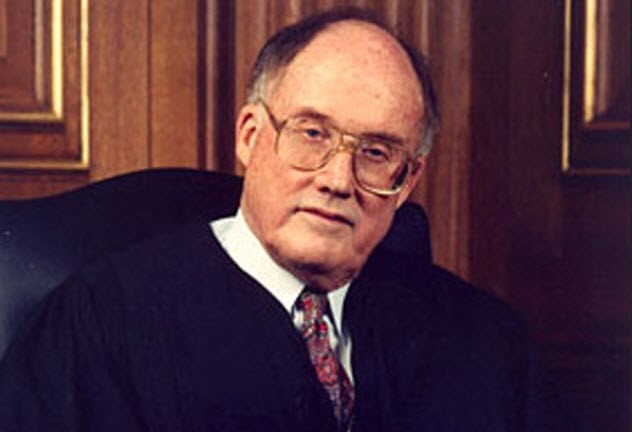
William H. Rehnquist was appointed to the US Supreme Court in 1971. In 1986, he became the new chief justice and remained so until his death in 2005.
Throughout his many years on the Supreme Court, he earned the nickname “the Lone Ranger” for sticking with what he believed in and voting that way. He voted against the legalization of abortions and school desegregation. He was in favor of school prayer, states’ rights, and capital punishment. One of his most notable decisions was ending the 2000 Florida recount by voting with the 5–4 majority and giving the presidential election to George W. Bush.
On October 26, 2004, Rehnquist announced that he had been diagnosed with thyroid cancer. He battled the disease right up to the very end. He refused to resign from office and stayed there until his death on September 3, 2005. Although his death was expected, the Times was late on their deadline, having received the information at 11:20 PM.[4]
6 The Presidential Election, Part 1
November 7, 2000

Speaking of the Florida recount, that election night was one to remember, especially for The New York Times. It was between Republican candidate George W. Bush and Democratic candidate Al Gore. Surprisingly enough, a significant third-party candidate, Ralph Nader, was also present.
As the night went on, the votes in more states were counted. It wasn’t until they got to Florida that things got hairy. It seemed as though George W. Bush would be the next president as the votes were counted in the Sunshine State.
At 2:15 AM, the Times learned that Al Gore was preparing to make his speech to concede the race. The presses were stopped to print a new headline: “Bush Appears to Defeat Gore.” Just as the pages were sent off to the printers, the Times found out that Gore had been told to hold off on his speech. The race was not yet over.[5]
5 The Presidential Election, Part 2
November 7, 2000
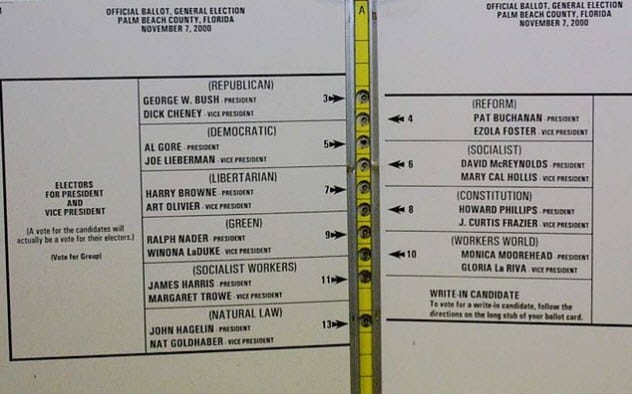
It seemed that Gore was going to win the popular vote. So, a second “stop the presses” was called.[6]
After a recount, Bush won Florida’s electoral votes. The continuing recount dispute was stopped by the US Supreme Court when they issued their ruling on December 12, 2000, to permit the previous vote certification to stand. Bush won.
The recount in Florida was so controversial that it led many Americans to support alternative voting systems. This was also the fourth time in US history that a president had been elected without winning the popular vote.
4 The Trans World Airlines Flight 800 Crash
July 17, 1996

Trans World Airlines (TWA) Flight 800 was going to Paris from New York when it crashed off the Long Island coast at 8:40 PM, just minutes after takeoff. There were no survivors out of the 229 people aboard.
The explosion was seen by many witnesses that night. Some stated that they even felt a tremor as the plane hit, and others reported seeing bodies floating in the water. The fireball was so immense that it could be seen from 16 kilometers (10 mi) away.
This was clearly a tragedy for the families of the people aboard, and an explanation was needed as to what could have happened. At the time, it was speculated that it was a terrorist attack because of the explosion on board.
It was later determined that a blown circuit had ignited the fuel in the plane. After the announcement of the crash was reported, the Times ordered a “stop the presses” to print the new headline.[7]
3 Jacqueline Kennedy Onassis’s Death
May 19, 1994
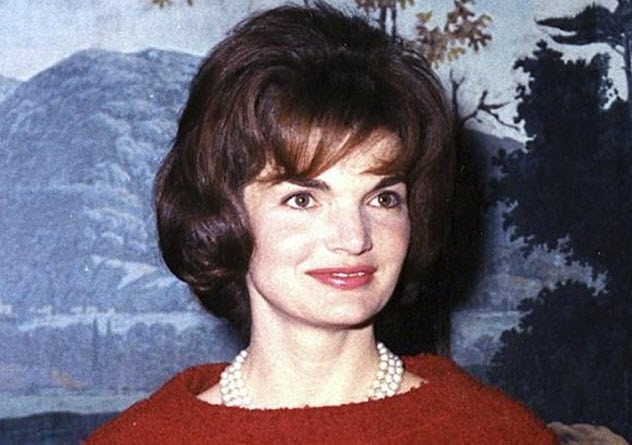
Jacqueline Kennedy Onassis was remembered as the “First Lady of Camelot.” The social event of the year was her wedding to the future President John F. Kennedy (JFK). Jackie was also very talented in many aspects of life. She was multilingual, speaking Spanish, French, Italian, and Polish. Although she was not an actress, she has her own IMBD page showing off the Emmy she won for “A Tour of the White House.”
Tragically, her husband was killed in one of the most famous assassinations in the world. JFK was shot dead in downtown Dallas, Texas, on November 22, 1963. Jackie was seated next to him and wore the famous pink dress, covered in blood, to the swearing-in of Lyndon B. Johnson. It is regarded as one of the most iconic artifacts from the assassination.
In 1993, while on a Caribbean cruise around Christmas, she developed a cough and swollen lymph nodes in her neck. She was flown to her doctor in Manhattan. After X-rays and biopsies were taken, it was discovered that she had non-Hodgkin’s lymphoma.
The first course of chemotherapy seemed to bring her cancer into remission in early January 1994. Sadly, it was discovered in April that her cancer had spread to her brain and spinal cord.
According to her wishes, on May 18, 1994, she went home from the hospital and died in her sleep that night at 10:15 PM. She was 64 years old. The announcement by her son, John F. Kennedy Jr., caused the nation to mourn and the Times to rush to change their headline.[8]
2 President Lyndon B. Johnson’s Televised Speech
March 31, 1968
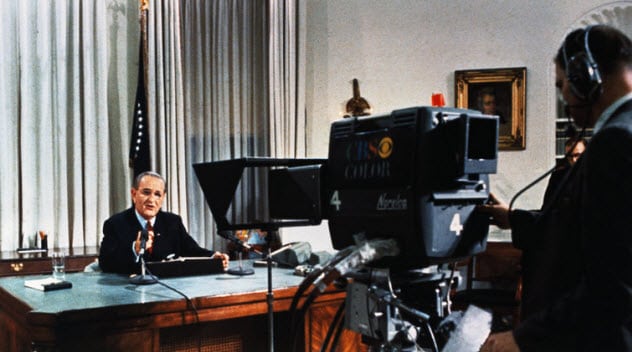
After the tragic assassination of JFK, Vice President Lyndon Johnson was sworn in. Something like this had happened in the past but never so late in a president’s term. It was a challenge for Johnson to assume the office of president and run for reelection in the same year. Within months of being sworn in, Johnson addressed Congress and asked them to honor JFK by passing a civil rights bill. In 1964, he signed the Civil Rights Act.[9]
As Johnson had assumed the presidency so late in Kennedy’s term, he was eligible to seek nomination again for another full term. On March 31, 1968, Johnson addressed the nation on television at 9:00 PM. The Times had the papers rolling through the presses. It was assumed that he would run again.
His speech was even given to the Times at 8:00 PM. But to the shock of the nation and the newspaper, Johnson announced that he would not pursue another term. It was time once again to “stop the presses.”
1 Dewey Defeats Truman
November 3, 1948

The most famous headline blunder has to be the Chicago Daily Tribune‘s “Dewey Defeats Truman.” The picture can be seen of Harry S. Truman holding the newspaper two days after it was announced that he had beaten his opponent, Thomas Dewey, by a substantial Electoral College margin of 303 to 189 in the 1948 US presidential election.
On his way back to Washington, DC, Truman’s train stopped in St. Louis, Missouri, where someone handed him a two-day-old copy of the Chicago Daily Tribune. This may have been a massive blooper for the Tribune, but they were not the only ones convinced that their headline would be accurate.
It seemed that Dewey was going to win by a landslide. At 11:00 PM on election night, every paper was convinced of Dewey’s victory. However, at 3:00 AM on November 3, it looked as though that landslide victory was not the case. They had to push the “Truman Wins” paper instead.[10]
The main election story for the Times was written at 8:30 AM on November 3, the day after the election. This saved The New York Times from making the same mistake as the Chicago Daily Tribune.
Dane is an author and freelance writer living in Indiana.
Read about fascinating op-eds from The New York Times on 10 Amazing Op-Docs From ‘The New York Times’ and 10 Fascinating ‘New York Times’ Op-Docs.




